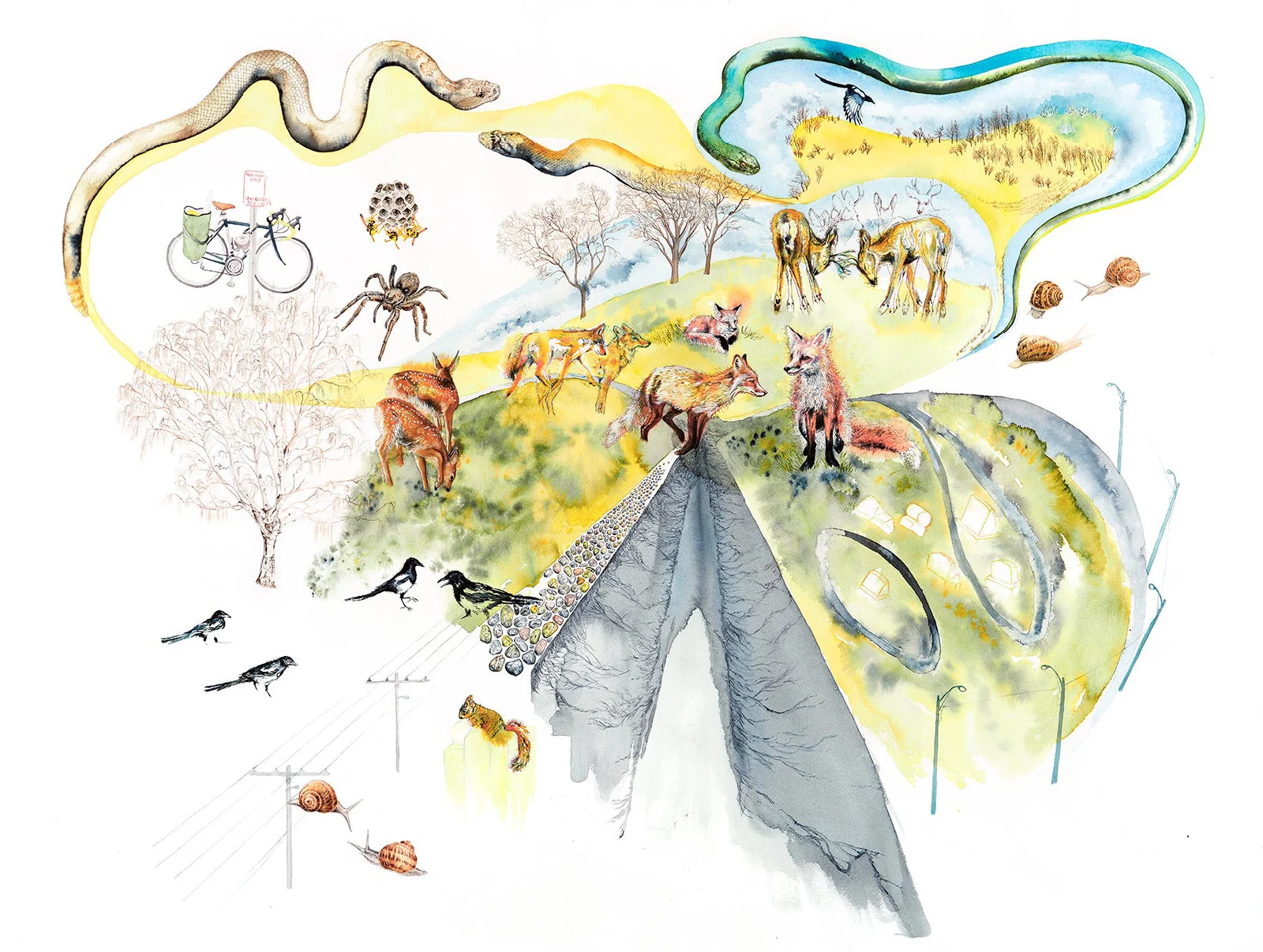Caustic Glasswork's Punk Spirit Shines Through Stained Glass
- 6 April 2022
- ByNilina Mason-Campbell
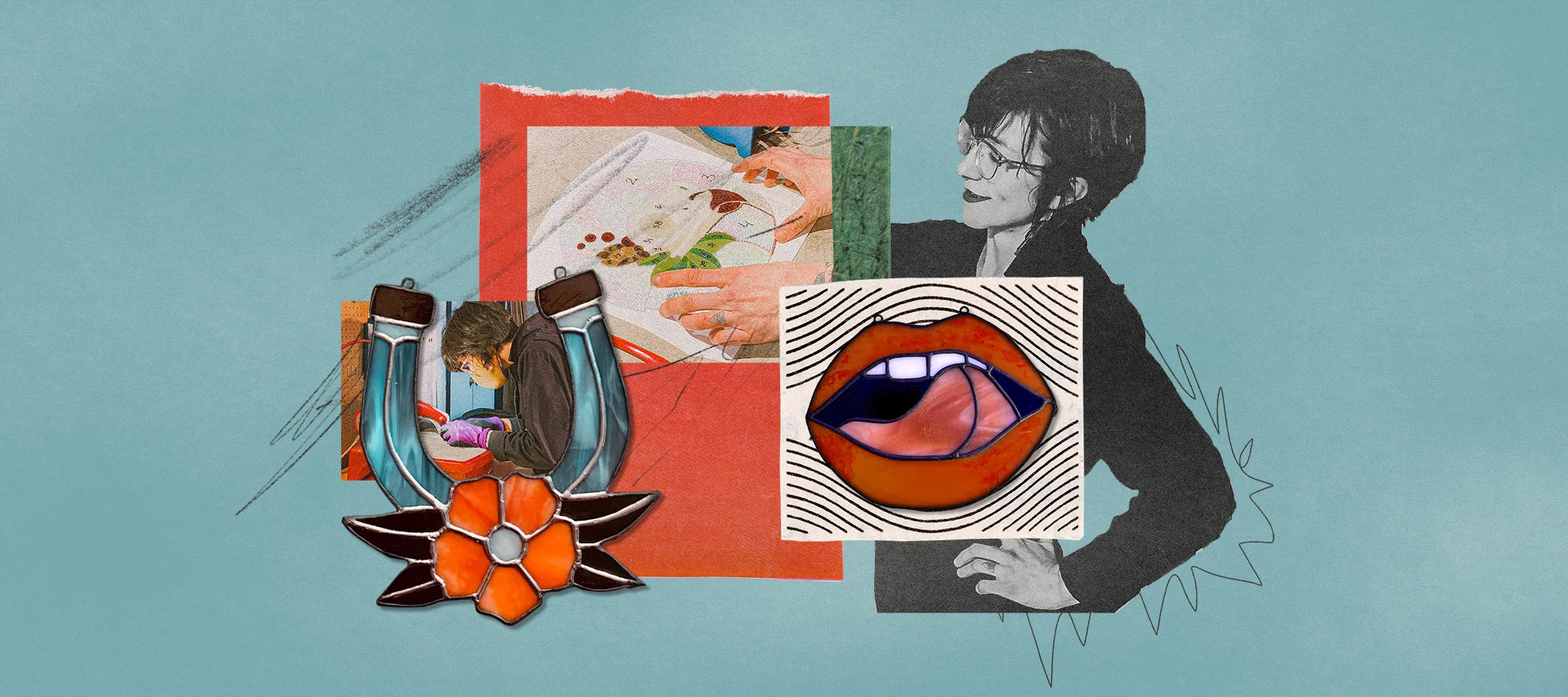
Some people just aren’t built for day jobs so they build their own. Unsuited for working in an office, Portland-based artist Ashley Costa had always pursued art on the side, but since the onslaught of the pandemic, stained glass has become her full-time focus.
Under the banner of Caustic Glassworks, Costa has been scaling up, recently moving from a room in her home to a designated shared studio space. The move has helped further solidify their steadily growing business as she sells her original creations via in-person markets and her Big Cartel shop. The designs, inspired by their personal interests, run the gamut from animal skulls to drag and video game icons. Glasswork has proven to be a natural fit for Costa’s aesthetics after working in stencil and street art for years, and due to its familial proximity — their mother created stained glass pieces while she was growing up. Balancing commerce with creative exploration remains a priority for her as she experiments with different types of glass and even incorporates pressed flowers into their work.
We met up at their studio to discuss business growth and the labor behind it, the accessibility in scheduled product drops, finding community, the importance of Instagram, and the possibility of going on tour.
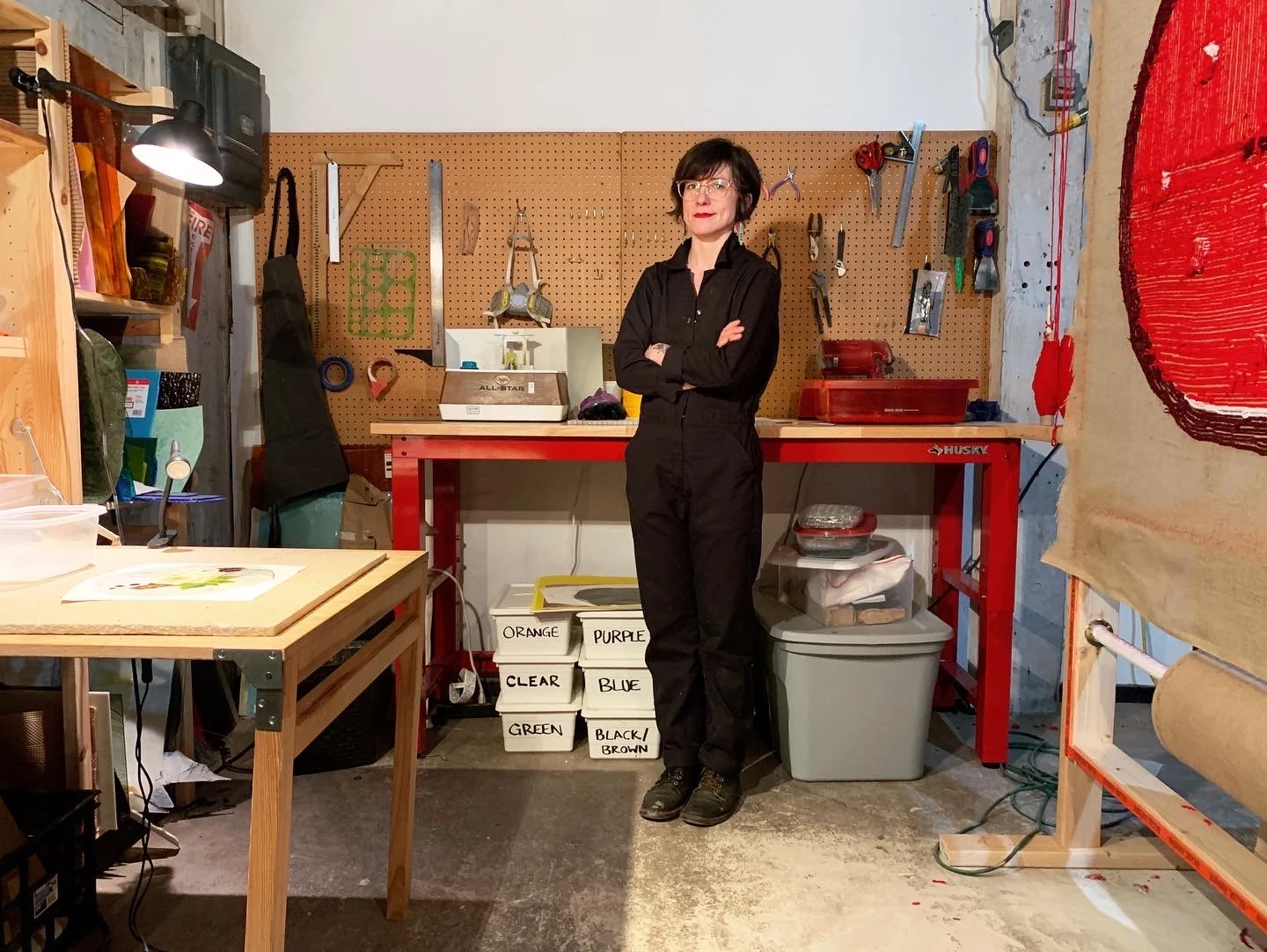
You spent years in the service industry and now you're working for yourself. How was that transition for you?
Well, what's funny was, I was doing art and living the artist-service industry life, and then I got pregnant with [my son] Leon in 2011. I was like, “I'm gonna go and get a degree. I'm gonna give my kid a better life.” So I got a degree. I worked at Reed College for two years and I was just like, I don't think I can work for other people. I realized that I couldn't exist in an office setting and that I really missed being an artist. It was actually the summer before lockdown and I was like, “Alright, that's it. I can’t do this.” My mental health wasn’t good and so I quit and went back to waiting tables and trying to get myself back into doing stained glass. When COVID happened and we weren't allowed to leave our houses, I was able to stay home and actually refine what I was doing and build it into the business that it is today, because I didn't really have a choice.
So you had years of being an artist, essentially on the side, doing stencil art and pet portraits. Caustic Glassworks seems like a proper business. Is that fully owed to COVID? Or did you change your approach, having had that Reed experience and been like, it has to work out as a full-time deal?
I'm kind of like a “scrappy kid”; I'm kind of a hustler. First off, I just don't know how to sit still, so anything that I pursue I figure out how to turn into a business so that I'm able to financially support myself and my family. I think that with COVID, after I lost my job and we were home, I just had more time to make art and then more and more people asked me to do markets. I started an online store and then I was like, “Oh wow, you actually can get paid to do something you love.” Granted I work 60 hours a week instead of 40, but I'm doing something that I love. And I get to kind of play by my own rules, which is good because I don't think most people who employ me know what to do with me.
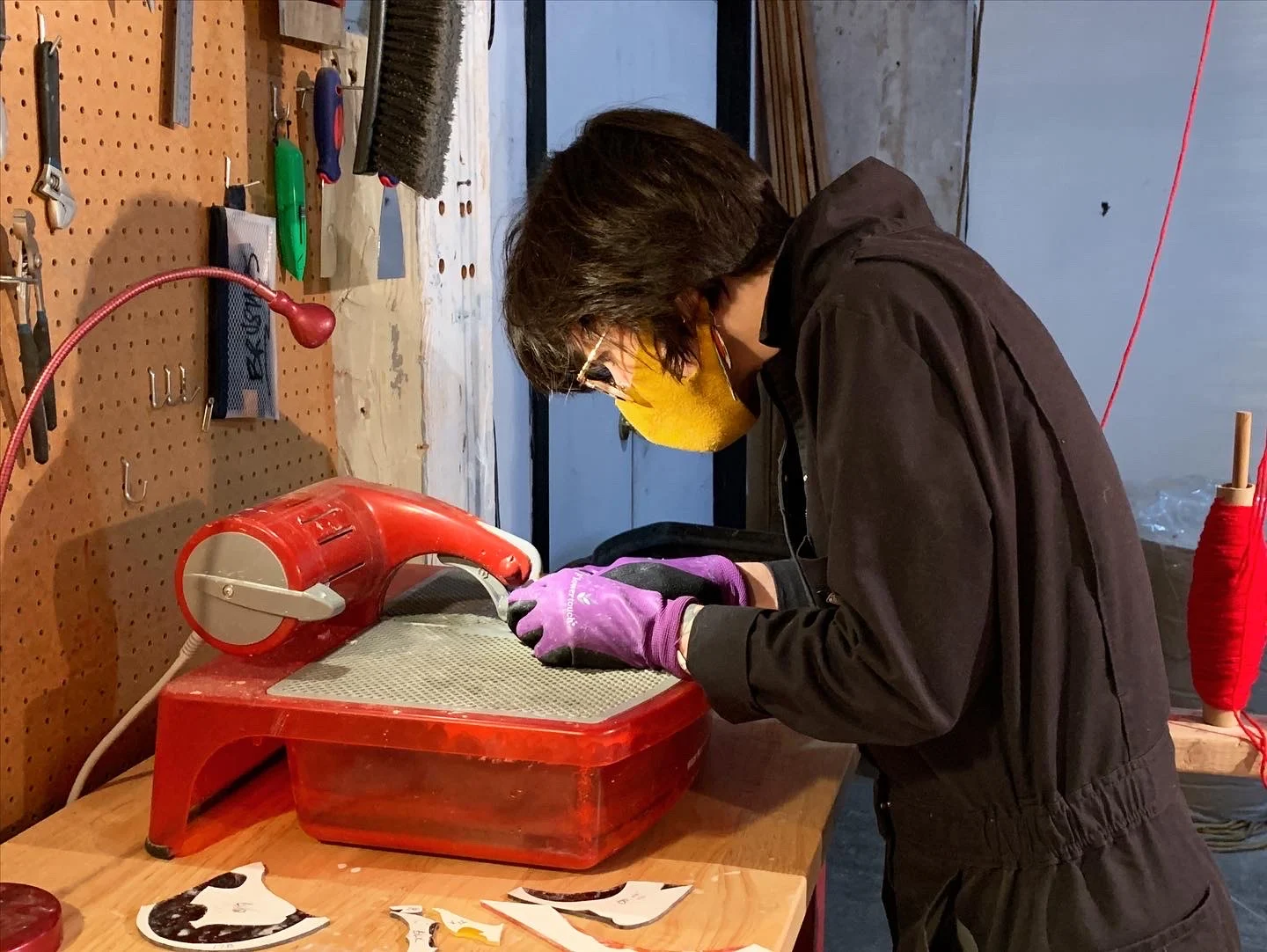
And so speaking of you working 60 hours versus 40, are you attempting to find a balance? What's your approach to working so much more but working for yourself?
Balance isn’t something I think that I've ever been very good at.
Is it a goal of yours or…?
Yeah, I think especially being in this [studio] space now is forcing that balance for me. I still have a desk at home. I do all my design work from home and foil the glass pieces at home. But I think that I've learned a lot from this year on what balance is. I'm trying to be better at dropping Leon off at school, coming here [to the studio] and working, so when I'm home, I'm present. The first year of this business was not like that. When you get to the holiday season, you just live and breathe art. I’d literally wake up at seven in the morning, start working on it, and be up until four the next morning.
During the holidays I noticed you kept your Big Cartel shop updated, and you also did tons of markets. You did Crafty Wonderland and it seemed like you sold out of stuff on day one. What was that like for you? How do you manage inventory?
Well, I'm getting ready for the holiday season now. Literally everything I make, I'm trying to do this thing where I make one extra, and I just put it to the side for the holidays. It's hard — stained glass is very labor intensive, so it can be hard when I do these markets. I love everyone's art; I'm not saying anything's better or worse or easier or harder, but it's just a stained glass piece, even if it's a small piece with 35 pieces of glass, could take 10 hours to make. And then that can be a hard thing when you're putting a price on it, because people see a small little stained glass piece and they’re like, “what, this is $80?!”’ Like, yeah, dude. And honestly, I probably should charge more.
So I think doing Crafty Wonderland was a really big learning experience for me, because it's like the Super Bowl of crafter fairs. I'd love to do it again. I noticed a lot of artists will be working on the next season in advance. So in summer is when you should be working on stuff for Halloween, fall type stuff. And at the end of summer, you should already be working on what you're trying to sell at Christmas. So this last year being the first year I did markets, I learned a lot.
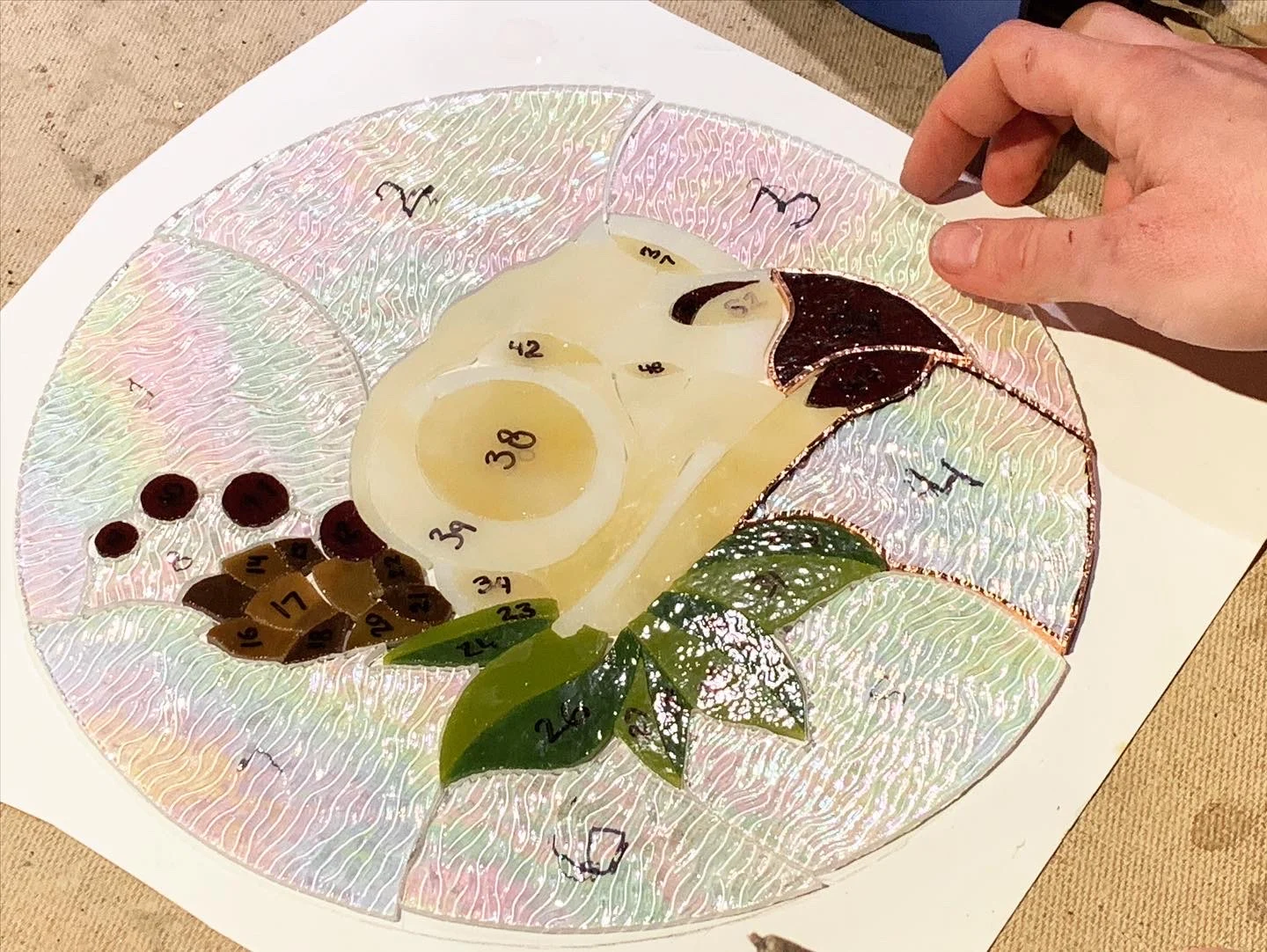
Do you feel like doing every part of it by hand is kind of part of the value in it?
Yeah. I don't think that people realize how hands-on every single piece is, like how long a stained glass artist stares at a piece. Because when you’re looking at a piece, every little piece is cut and ground and cleaned and foiled, and then set up, soldered, and patinaed, and then finished, and then waxed. You're taking such care and every piece, each little piece, needs its own process. So that’s always what I tell people — you could have a piece that's smaller, let's say 50 pieces, but it's going to be just as much work if you make a much bigger piece. Sometimes people will commission me and ask, “Well, I have this idea, but if I got it smaller would it be cheaper?” And I'm like, not really. Maybe from the supply standpoint, but most of what you're paying for in pieces is the labor.
How did you get into stained glass to begin with?
My mom actually did stained glass when I was growing up. I used to watch her, and we had stained glass pieces all over the house. I was really fascinated. I think that was how I got into stencils; I appreciate sharp edges. And I just love the idea of taking a bunch of little things and making them into one thing. Doing stencil art for over a decade, I think my brain just naturally gravitated towards it. But I didn't want to mess around with spray paint anymore. I wanted something where I could sort of take that design aspect that I built throughout my 20s and have it be an art form that's a little bit more polished, and a little bit more desirable, honestly.
I can apply a lot of what I learned from being a stencil artist to stained glass. It's fun to play with colors, it’s fun to use different glass and see the different ways that glass catches the light. I'm kind of a sassy sort of person, so I like taking a really traditional art form like stained glass but then making a sign that says, “Home’s where the fuckers ain’t.” You think of this as a high-end or fancy sort of art form, and then, you know, you fucking make a stained glass of people picking their nose.
What are the pros and cons of shop drops versus just having the store open and posting pieces as you finish them?
I think the drops are good for me from the standpoint of being able to set a date for myself and work towards it. I am thinking about not doing drops as much [though] and just when I finish something, putting it on the website. A lot of the people who buy my stuff live within the Portland area, through markets. Having a website and an online store, there are a lot of people that will hit me up and want something and they live somewhere else in the country. So I think it also gives everyone a fair chance to buy something because I feel bad if some are like, “Oh, this isn't the store now,” or, “Oh shit, I wasn't on Instagram that day and now I missed out.” So I want to give people enough notice that they can buy it, because it just gets hard for me being involved with DMs and stuff.
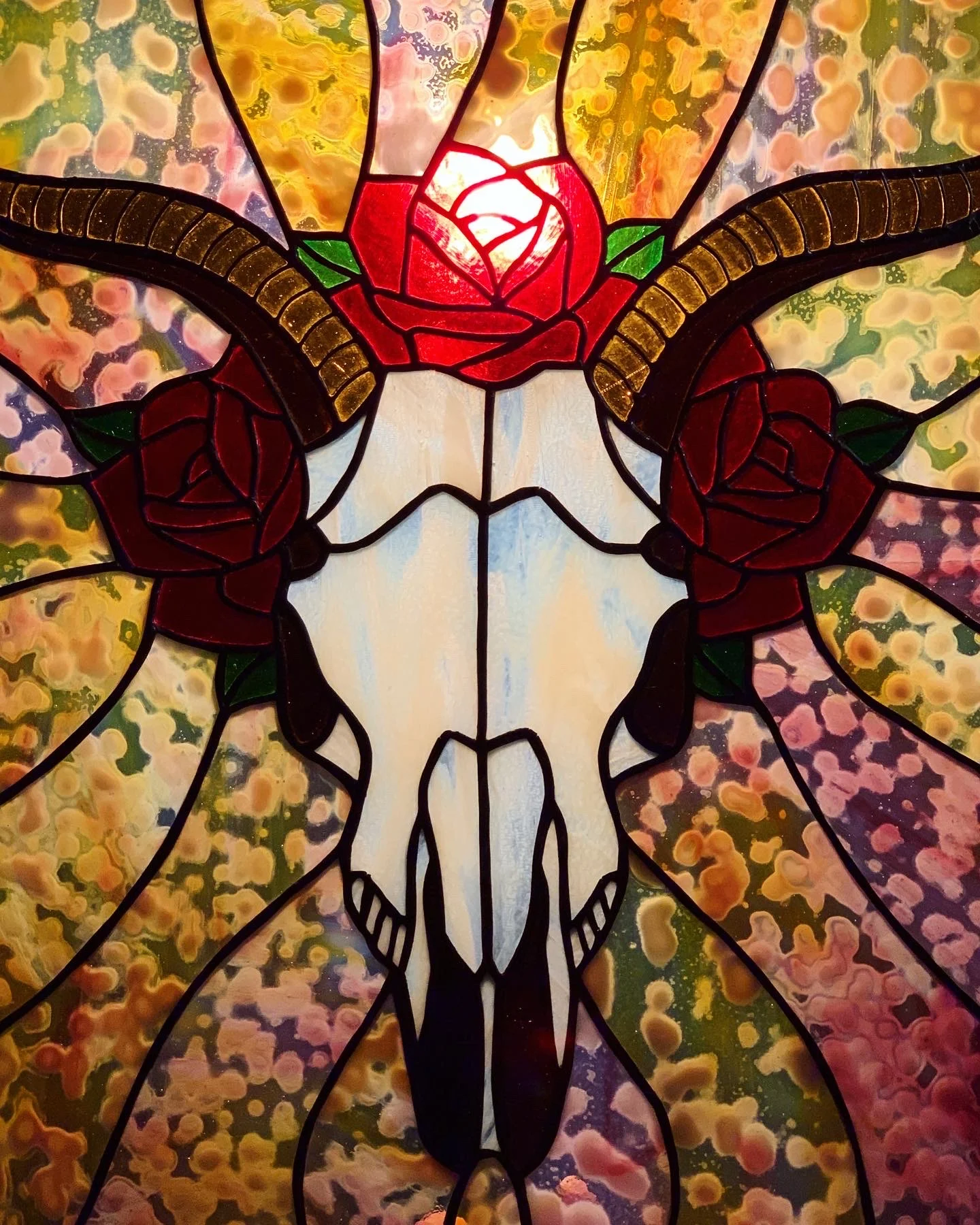
Before you had even launched your recent Western themed drop, you mentioned that this would be the last time certain designs would be made, and I thought, “Oh, retiring popular designs? Wow, that's a move.” So how do you handle social media and DMs from people who missed out on buying something?
Well, I guess it’s weird because I follow a lot of other artists, and they're like, posting every day. I think I go from where I'm posting too much and then like, no one hears from me for two or three weeks, usually because I’m trying to work on shit.
I want to be seen more as an artist and not like, just production mode. I just get burned out and I don’t wanna just be the person who does pink cowboy boots or the person that does candles burning at both ends. Because then if I'm just there, I’m just production at that point. I want to be able to keep pushing myself further and do cooler shit.
It seems like there's so many people that still want more. Does the financial pressure of knowing you could make X amount of money because there's a market for cowboy boots or cowgirls, like, “I could just make bank and force myself to do it.” Does that ever come over you?
So that’s why I’ll put pre-orders up because I'm like, well, if someone buys it then I'll go make it, right? I'll probably put pre-orders up every time I do a shop update just so that way if you want them and you can wait four to six weeks, then sure, I’ll totally make that for you. No problem, you know?
I definitely go back and forth, though. I mean, anytime I've done a Story sale on Instagram, it's been because the bills gotta get paid. It’s fine, it's not even like I'm that destitute, but I’ve been on this big kick the last year and a half of not using my credit card. So, I’m trying to live within my means. And I still work at the restaurant once or twice a week.
Is it surprising how important Instagram has become to your business?
Yeah, well, that's the thing, right? It was really hard for me to start a business on Instagram because I'm so used to my personal Instagram. It's only people I know, right? It's private and I'm not always sharing a million things on there. I'm not a big marketing person. That's the part that's just hard. I want to be able to just make the art. I've been trying to learn; I'll watch people that are just fucking blowing up, that have 100,000 followers. You see them building a successful business. I've always noticed that in the art scene. I've seen people doing this specific art, these really small, simple things, but they were building an empire. Whereas I've had friends who are like some of the most incredible painters in the world, but because they don't know how to sell themselves, they're not as successful, right?
There's such a big part of it that has to be your willingness to market yourself and sell yourself. That's been probably the biggest learning curve for me. I just feel weird being like, ‘“Hey, check out my art, my art’s pretty fucking cool.” So you know, I’m just trying to stay true to myself. I think my art definitely isn’t for everyone. I’m just like, “Alright, this is what I make. Here you go.” But I would say marketing is something I also need to work on.
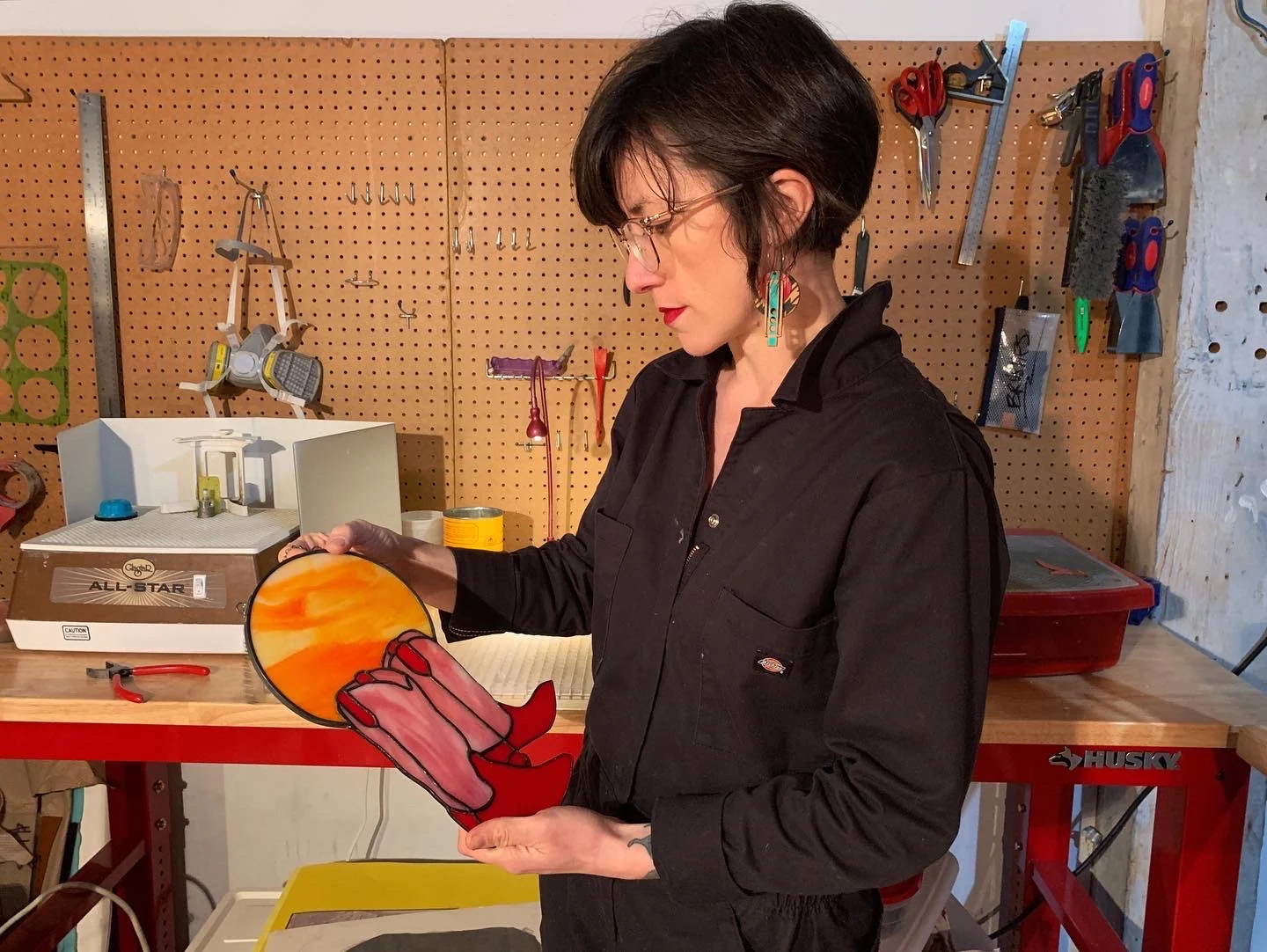
I see you post, then I see the response. It’s a cool art form, and I've never seen stained glass that looks like this. I can really see why people would follow to see what's next with you.
It’s interesting, because I used to never care about Instagram or numbers. But there was definitely a period there after the Western drop where I was like, “You were just waiting for this drop and a bunch of you unfollow me?” Or, “Oh, you were here for the giveaway to get something for free and now you're done?” So I think I have to remind myself like, I don't give a shit, actually. Why am I even looking at these numbers? Why am I letting it fuck with me? I'm just gonna do my thing. Obviously I'm doing well enough but, yeah, I rely a lot on Instagram. That's how I sell most [of my pieces] — that and markets. And then people are able to find my Big Cartel shop through Instagram. It's all about social media. Like, that's how you sell your shit.
I saw in your Instagram Stories about wanting to potentially do craft fairs beyond the local area and use that as a means of traveling. Can you talk more about that?
I'm trying to get into a craft fair in Austin, just because that's like my second home. It’s an excuse to see my friends and family. I think it's hard, though. A lot of markets do want to focus on the art and craft of that community. And stained glass isn’t the easiest set up to travel with. So I think there's a lot of logistics that probably won't make that possible this year. I have some ideas. I was like, what if I get a van? Have my own little studio or something like that. I’d love to do that. That's always been a dream of mine as an excuse to tour. So that would be really cool, if I could figure out how to make that happen in the next year or two.
I just really enjoy markets. You meet other creatives. I feel like just in this last year I'm a part of a community. It feels really nice to be around other people doing similar things. I don’t feel like people understand the hustle of being a small maker and getting yourself out there and getting to meet people.
I have a few friends who are tattoo artists that tour, but seeing a stained glass artist tour… Alright!
I know, I’m like, “Okay, this will do!” But then — wait a second. What about my tent and my table, and even just my setup to be at the market is wild and so I'd have to ship it. So I’d probably have to do a lot of smaller stuff. I think my first thing is I'll try Seattle and drive myself there. The same way I would do a market here in Portland, and just see how that goes. Then, who knows? It's a free trip, that’s how you have to treat it. And the exposure, that can be cool. So it's just a way to meet people. I think that's the part I like most about markets is just being able to meet new people.
So speaking of exposure, you had your 4k giveaway on Instagram to celebrate reaching 4,000 followers and you racked up so many more followers through the contest. Was it surprising how quickly your following grew during the giveaway and raffle?
Yeah, it was pretty cool. I think it was interesting because it was during my whole Western series that all these people started following me. And then after that I'm sharing stuff that's like this burning church and saying, “Check this out!” and then I lose 50 followers. You know, I think I can understand that going from cowgirls and horses, and then to that, they're like, “Oh, whoa. She's all over the place.” But that's always what I tell people: there's all these different parts I feel of my personality, but that sort of punk rock spirit shit is still there.
All photos by Nilina Mason-Campbell.
6 April 2022
Words by:Nilina Mason-Campbell
- Share
